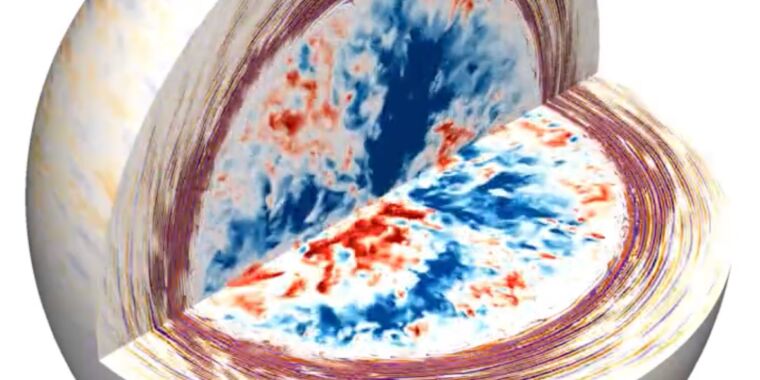This is the best summary I could come up with:
Science 101 tells us that the twinkling appearance of stars from our vantage point on Earth is due to atmospheric effects: winds and varying temperatures and densities in the air bend and distort the light.
This work allows future space telescopes to probe the central regions where stars forge the elements we depend upon to live and breathe.”
The critical feature for this latest research is the so-called “convection zone,” typically found near the surface, although it can also persist deeper into the star.
Convection is also one proposed mechanism for the so-called “red noise” signals astronomers have observed in the photometric light curves of hot, massive stars—a mysterious pulsing that causes fluctuations in the stars’ brightness.
The simulations also revealed that the twinkling attributable to core convection is simply too weak to fully explain the observed red noise effect in massive stars.
The next step is to improve their simulations to take other effects into account, such as a star spinning rapidly around its axis, which might produce a flickering strong enough to be detected by telescopes.
The original article contains 909 words, the summary contains 178 words. Saved 80%. I’m a bot and I’m open source!



